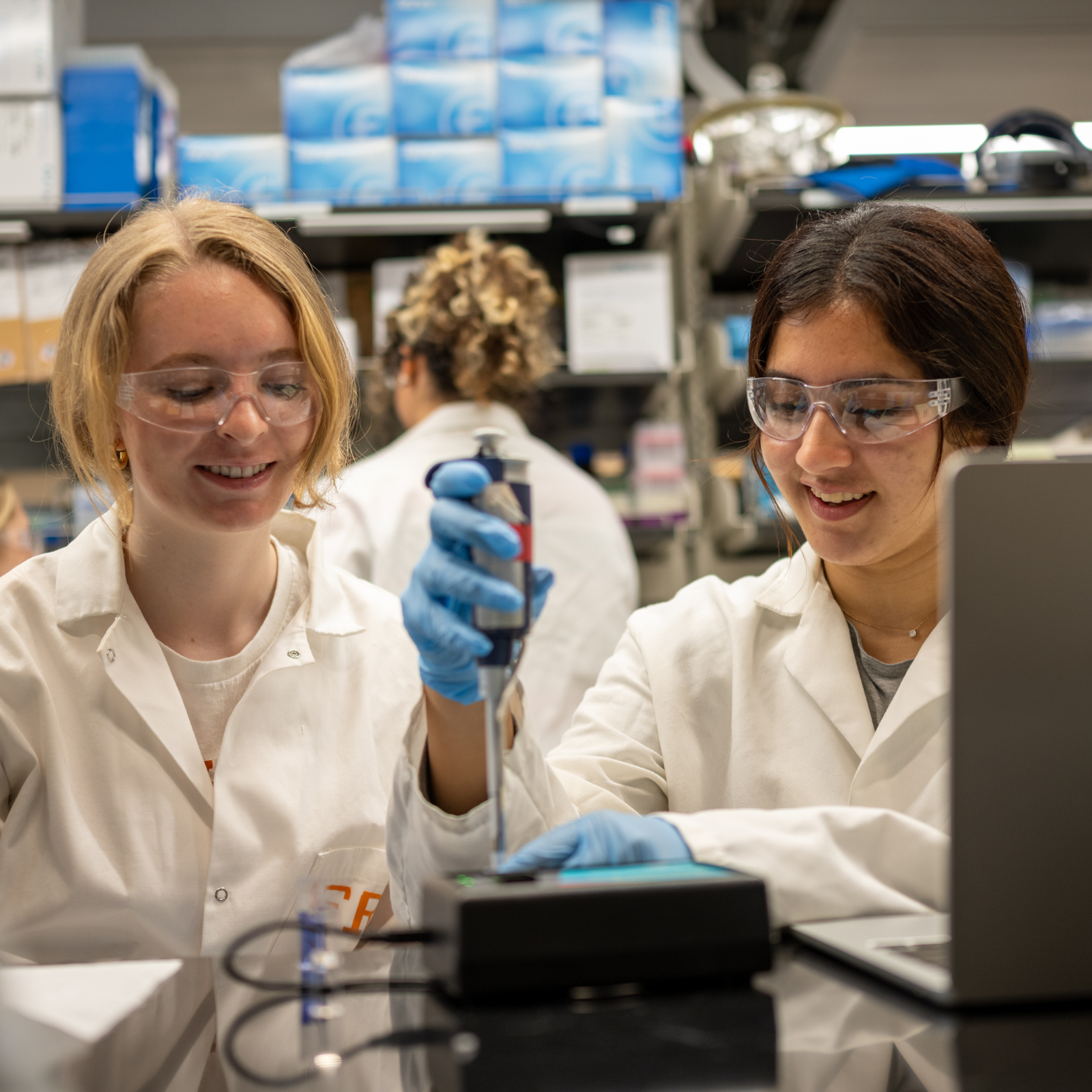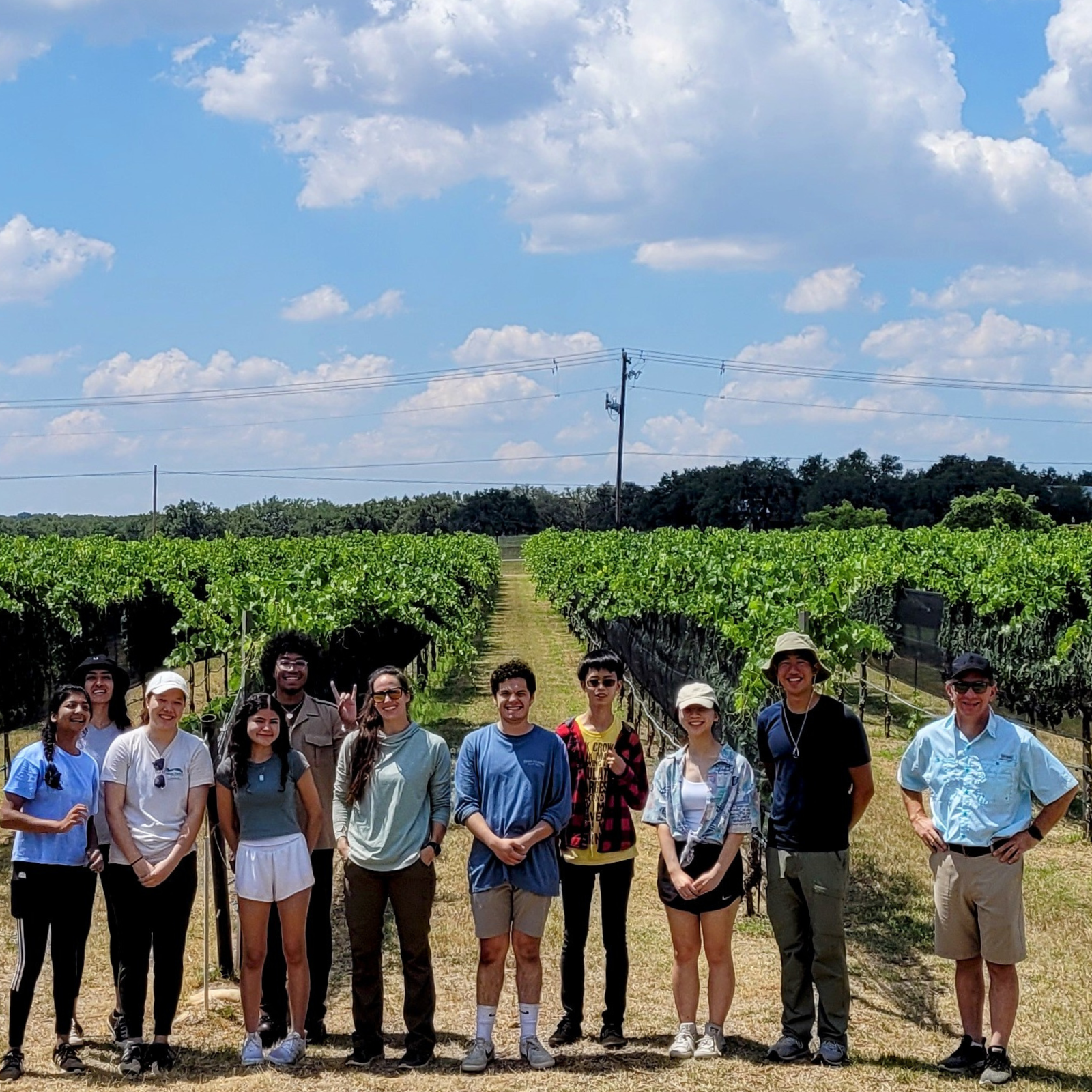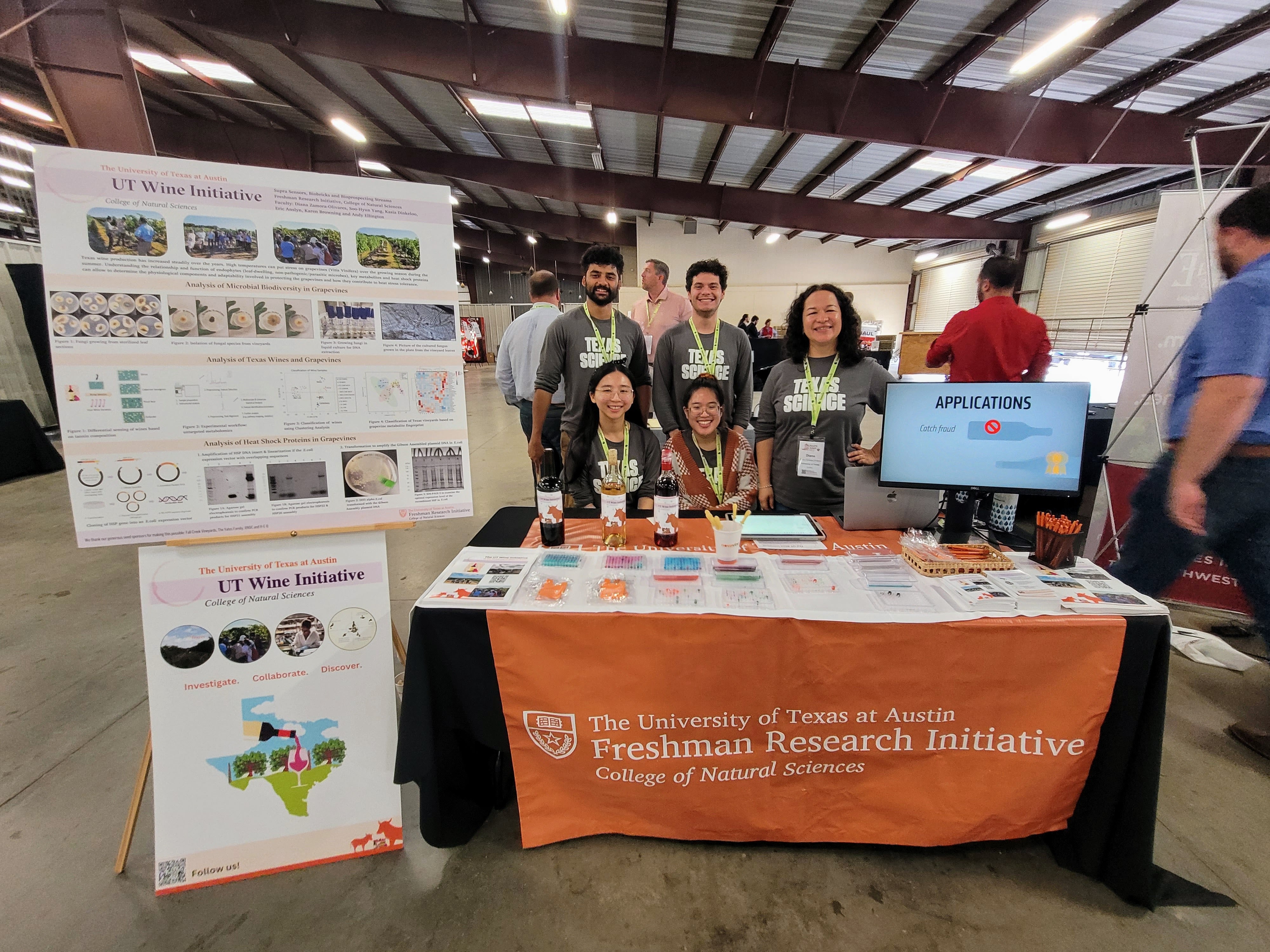About
The UT-Wine Initiative (UTWI) fosters education, undergraduate research and entrepreneurship in partnership with the Texas Wine Community. Our mission is to promote interdisciplinary research in the field of wine chemistry, enology, and viticulture of Texas wines. We connect academia, industry and stakeholders perspective to tackle real word challenges through collaborative research. Through this partnership, cutting-edge research will establish novel regional knowledge, which will be utilized to support the development of innovative strategies to advance Texas viticulture and enology.
As part of UT Austin's Freshman Research Initiative (FRI), the nation's largest undergraduate research program, we offer students a unique opportunity to collaborate with the Texas Wine Industry. Our undergraduate researchers:
- Gain access to professional and entrepreneurial experiences through real-world industry engagement
- Are exposed to challenges of working in the wine industry
- Receive an interdisciplinary education with an emphasis on applied research in wine chemistry, enology, and viticulture
- Participate in teaching, outreach, and research activities related to the winemaking process, fostering community engagement and knowledge transfer
This collaboration allows students to design and conduct applied research projects that address current challenges while building connections with industry professionals and developing valuable skills sought by employers.
-
Academic Collaborations
UTWI conducts interdisciplinary collaborations with faculty and universities across Texas joining efforts and applying modern scientific knowledge and technology to improve the understanding of the relationship between Texas terroir and grapevine development to the artisanal craft of wine making.
-
Wine Industry Partnerships
Texas Wine Industry partners meet and build connections with students working on these research projects, making UTWI an excellent recruiting platform for any winery, vineyard or organization that seeks to work with top skilled scientists.
Industry partners are invited to our Guest Speaker Seminars and round tables to share real life experiences within the classroom and provide an insider’s look into the challenges encountered in the process of wine making and the day-to-day operation of the industry.



Our Research
UTWI research projects are initiated through close collaboration between the wine community and university faculty. Our researchers delve into the genomics, proteomics, and metabolomics of Texas grapevines and wine, leveraging cutting-edge technologies to drive innovation. We actively seek dynamic new partnerships to expand our impact and advance the science of wine.
Current Seed Proposals & Publications
Analysis of Texas Wines
Compounds present in grape berries such as tannins, anthocyanins, tartaric/malic acid, sugars, and phenols are key components in high quality wines. These components vary significantly during the winemaking process. Analysis of wine constituents and development during the aforementioned stages using analytical methods will help understanding these correlations which can potentially reduce significant costs to the Texas Wine industry.
Wine Classification using Differential Sensing
The differential sensing method pioneered by Professor Eric Anslyn in the Department of Chemistry at the University of Texas at Austin has been widely applied for the detection of small molecules such as tannins in wine. Wine is an excellent candidate to test the capability our differential sensing technology due to wine's inherent chemical diversity and complexity. Tannins in wine interact with the array sensors giving as a result a unique colorimetric signature or fingerprint that is representative for a particular wine. Each wine displays a unique colorimetric fingerprint according to its singular tannin composition.
Current Applications
The differential sensing method is a powerful analytical tool that the FRI SupraSensors Stream at UT Austin has implemented in the last decade to classify and differentiate wine based on its diverse tannin composition. Current applications include the classification of varieties, blends, hang-on time on the vines, year of harvest, vineyards, vintage and regions. This data can be used to understand similarities amongst terroir and increase wine quality.
Analysis of Texas Grapevines
Texas weather drastically influences the composition and quality of wine. However, there is no research precedent on the relationships between grapevine physiology-metabolism, berry-wine composition and the environmental conditions in Texas over the course of a growing season.
Heat Shock Proteins
Understanding the function of heat shock proteins in Vitis Vinifera during various stages of the Texas growing season will allow to understand the physiological components and adaptability involved in protecting the fruit and leaves from heat damage.
Metabolomic Analytics
Small molecules or metabolites present in grape berries such as anthocyanins, tartaric/malic acid, sugars, tannins, and phenols are key components in high quality wines. These components vary significantly during the winemaking process, which includes the stages of the fermentation process, different skin contact techniques, the effect of barrel origin, and the time of aging. Further, Texas terroir influences the composition and quality of wine. UTWI students will undercover these correlations, and identify key wine constituents and their development during the winemaking process by applying advanced analytical approaches.
Selected Publications
- Umali, A. P. ; LeBoeuf, S. E.; Newberry, R. W.; Kim, S.; Tran, L.; Rome. W. A.; Tian, T.; Taing, D.; Hong, J.; Kwan, M.; Heymann, H.; Anslyn, E. V. “Grape and wine sensory attributes correlate with pattern-based discrimination of Cabernet Sauvignon wines by a peptidic sensor array” Chem Sci., 2011, 2, 439-445. DOI: https://doi.org/10.1039/C0SC00487A
- Ghanem, E.; Hopfer, H.; Navarro, A.; Ritzer, M.S.; Mahmood, L.; Fredell, M.; Cubley, A.; Bolen, J.; Fattah, R.; Teasdale, K.; Lieu, L.; Chua, T.; Marni, F.; Heymann, H.; Anslyn, E. V. Predicting the Composition of Red Wine Blends Using an Array of Multicomponent Peptide-Based Sensors. Molecules 2015, 20, 9170-9182. DOI: https://doi.org/10.3390/molecules20059170
- Crook, A. A.; Zamora-Olivares, D.; Bhinderwala, F.; Woods, J.; Wnkler, M.; Rivera, S.; Shannon, C. E.; Wagner, H. R.; Zhuang, D. L.; Lynch, J. E.; Berryhill, N. R.; Runnebaum, R. C.; Anslyn, E. V.; Powers, R. “Combination of two analytical techniques improves wine classification by Vineyard, Region, and vintage” Food. Chem. 2021, 354, 129. DOI: https://doi.org/10.1016/j.foodchem.2021.129531



Collaborate with UTWI
UTWI welcomes partnerships with Universities, Industry and Organizations across Texas to collaborate in offering opportunities to our undergraduate researchers to learn and contribute to the growth of the Texas Wine Community.
-
Advise UTWI researchers. Texas Wine community representatives, guest speakers and subject matter experts are welcomed to share their input and knowledge with our students. Collaborative sessions guide our research goals and understanding of specific challenges associated to the wine making process in Texa
-
Hire UTWI researchers as Interns. We welcome internship opportunities for our students during Summer and Fall.
We appreciate the generosity and ongoing support from our current partners:
-
The Yates Family
Contact Us
For more information, please contact:
Dr. Diana Zamora-Olivares, Associate Director, UT-Wine Initiative

